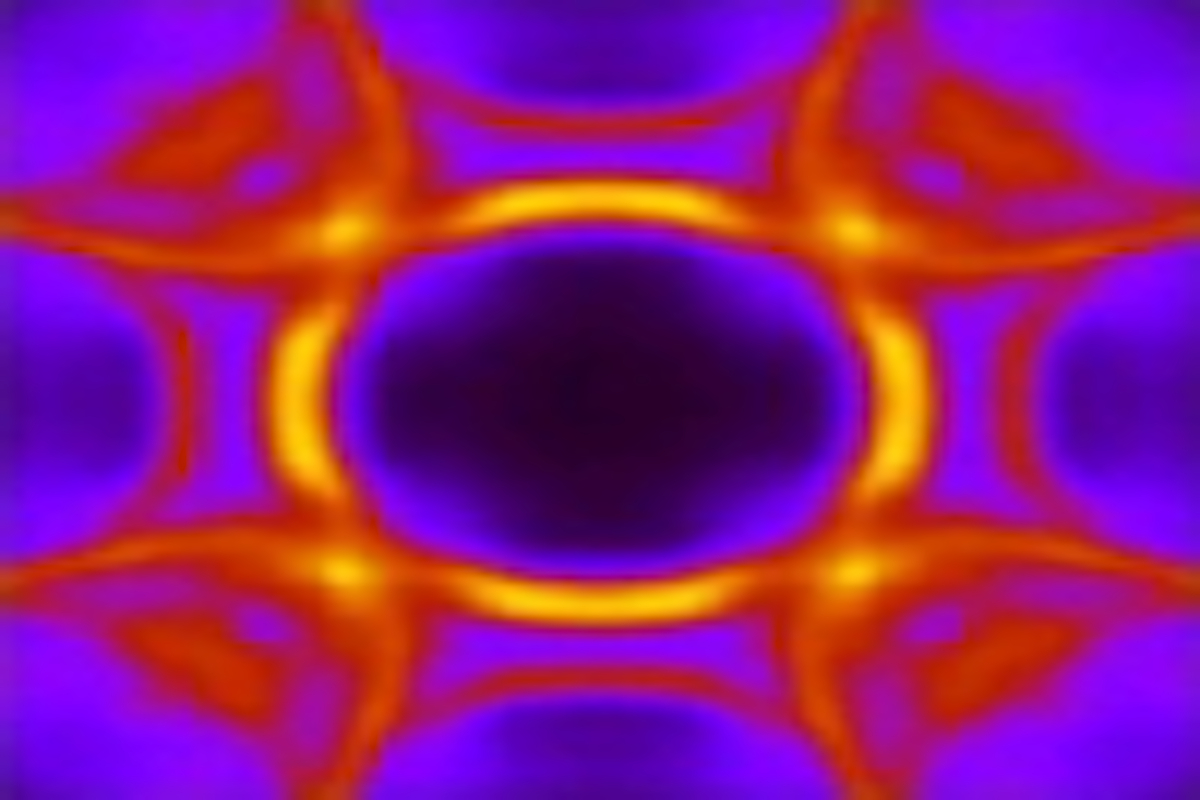Effect of diffusion and alloying on the magnetic and transport properties of Fe/V/Fe trilayers Iusan D, Alouani M, Bengone O, Eriksson O Phys. Rev. B 75, 024412 (2007)
The magnetic and transport properties of the Fe/V/Fe(001) trilayers were studied using the self-consistent Green’s function technique based on the tight-binding linear muffin-tin orbital method in the atomic-sphere approximation. The coherent potential approximation was used to describe the effects of interdiffusion and alloying at the interfaces on the properties of the semi-infinite bcc Fe(001)/mFe/nV/mFe/Fe(001) trilayers. The electric conductance was calculated using the Kubo-Landauer formalism, in the current-perpendicular-to-plane geometry. It is shown that a dipole moment is created at the Fe/V interface due to the charge transfer from vanadium to iron, and a small induced magnetic moment is present in the first vanadium layer and is antiparallel to that of iron. The interlayer exchange coupling shows rapid oscillations for small spacer thicknesses, and the interdiffusion and alloying at the interface stabilize the ferromagnetic coupling. Moreover, the interdiffusion reduces the vanadium-induced magnetic moment and increases the iron magnetic moment at the interface. The giant magnetoresistance (GMR) ratio presents damped oscillations as a function of the vanadium spacer thickness. The interdiffusion and the presence of Mn impurities at the interface reduce considerably the GMR ratio and produce results that are in agreement with experimental data.
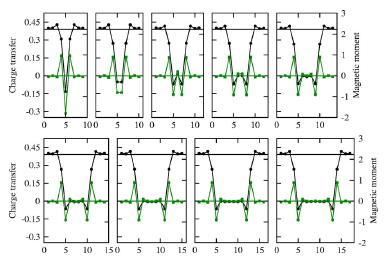
Fig1 : The variation of the magnetic moment (black circles) and the charge transfer (green squares) versus the layer index for the Fe(001)/nV/Fe(001) systems with n = 1-9 for the FM configuration. Four iron layers are taken into account on each side of the vanadium slab in the active region, embedded in semi-infinite bcc (001) bulk iron. The horizontal lines correspond to the bulk magnetic moment and charge transfer, introduced for comparison. The connecting lines are guides to the eye.
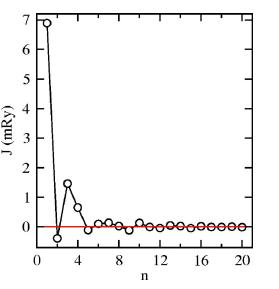
Fig2 : The dependence of the interlayer exchange coupling J in mRy as a function of the number of spacer layers $n$ for the Fe/nV/Fe systems.
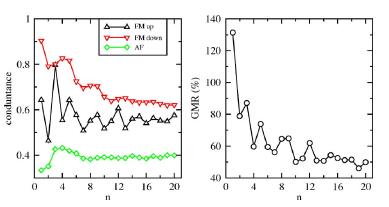
Fig3 : The conductances (left) and the GMR (right) as a function of the spacer thickness.The conductance for up spins is in black up triangles, that for down spins in red down triangles, and that of AFM configuration in green diamonds. The continious lines are guides to the eye.
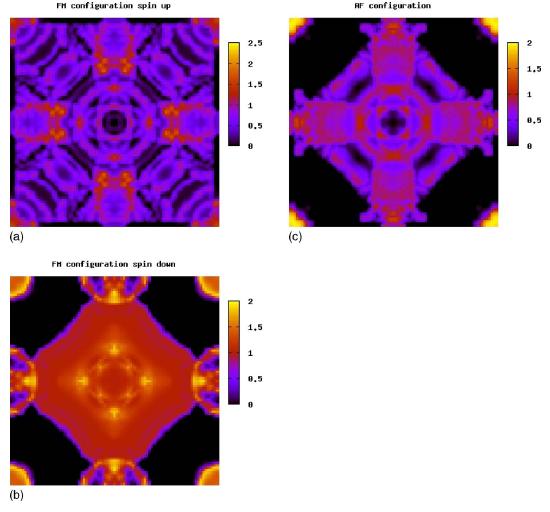
Fig4 : k-space resolved conductance for spin up (a) and spin down states (b) in the FM configuration and antiferromagnetic configuration ©. The red color represents the highest conductance and the blue the lowest.
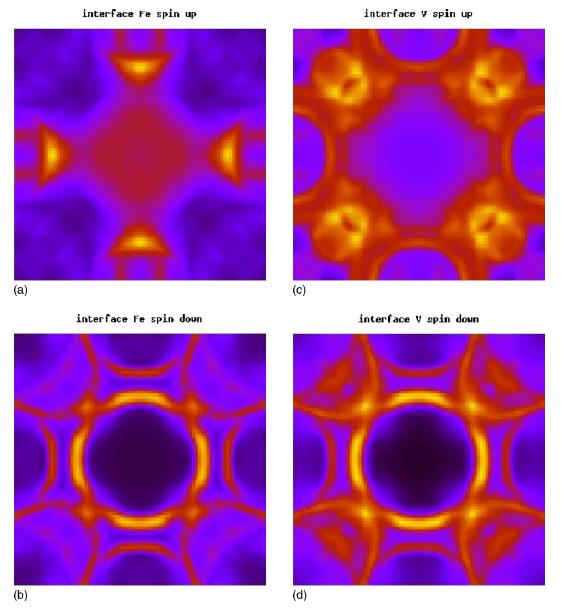
Fig5 : k-space resolved calculated Fe/V/Fe interface density of states at the Fermi level for (a) Fe spin up, (b) Fe spin down states, © V spin up, and (d) V spin down. The red color represents the highest conductance and the blue the lowest. configuration and antiferromagnetic configuration ©. The red color represents the highest conductance and the blue the lowest.
Involved persons :
M. AlouaniO. Bengone
In collaboration with :
D. Iusan
O. EricksonDans la même rubrique :
Etude ab initio des Propriétés Electroniques et de Transport Quantique dans les Jonctions HybridesAuto-assemblage et calibration en taille des nanostructures 1D

